How a Taiwanese company is trying to save the ocean
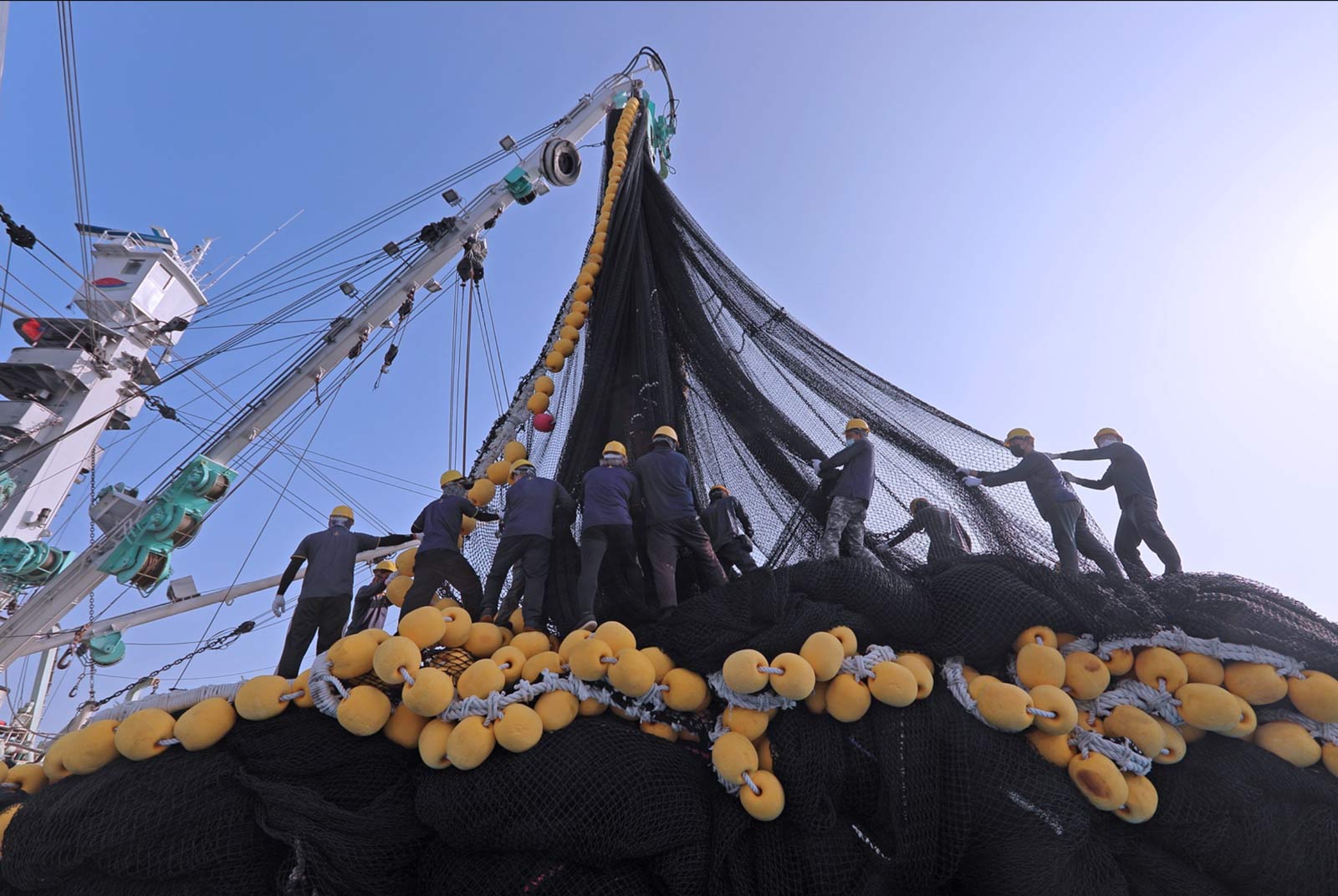
Source:Chien-Tong Wang
Discarded fishing nets are extremely harmful to marine ecology, but an alliance of fishermen’s associations, fishing net makers and nylon producers in Taiwan are trying to solve the problem by turning waste nets into outdoor clothing. Here’s what they’re up to.
Views
How a Taiwanese company is trying to save the ocean
By Ching Fang Wuweb only
On February 1st, the first day of the new Lunar New Year, Lin Chun (林群) received an urgent message: “There’s a sea turtle entangled in a fishing net on Fulong Beach.”
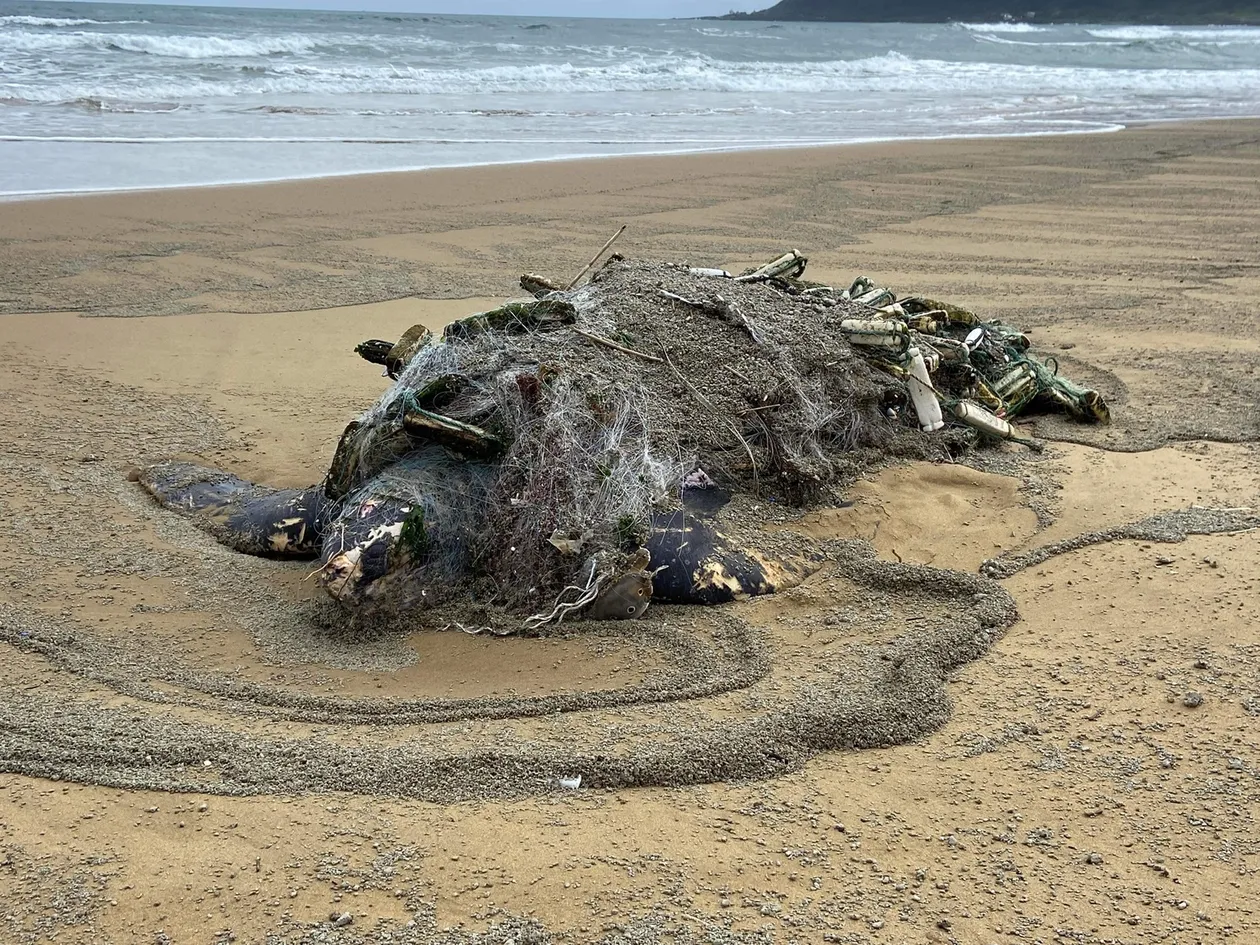 (Source: CommonWealth Magazine)
(Source: CommonWealth Magazine)
Lin, who lives on Taiwan’s northeastern coast, is known for disentangling and clearing away fishing nets and often free dives to save coral or sea turtles caught in these potentially lethal traps.
After responding to the call, Lin found the stranded sea turtle wrapped in several layers of gill nets and caked in sand that brought its weight to 80 kilograms; it took four people an hour to cut through the synthetic mesh and free the turtle from its grasp.
Covered with bloodstains, the 139-centimeter-long animal was a leatherback sea turtle, an endangered species and the biggest of the seven major species of sea turtles. In the end, it did not survive.
The netting that took the life of the ill-fated leatherback sea turtle has emerged as an even more lethal form of marine waste than straws, which are notorious for the damage they do to marine wildlife.
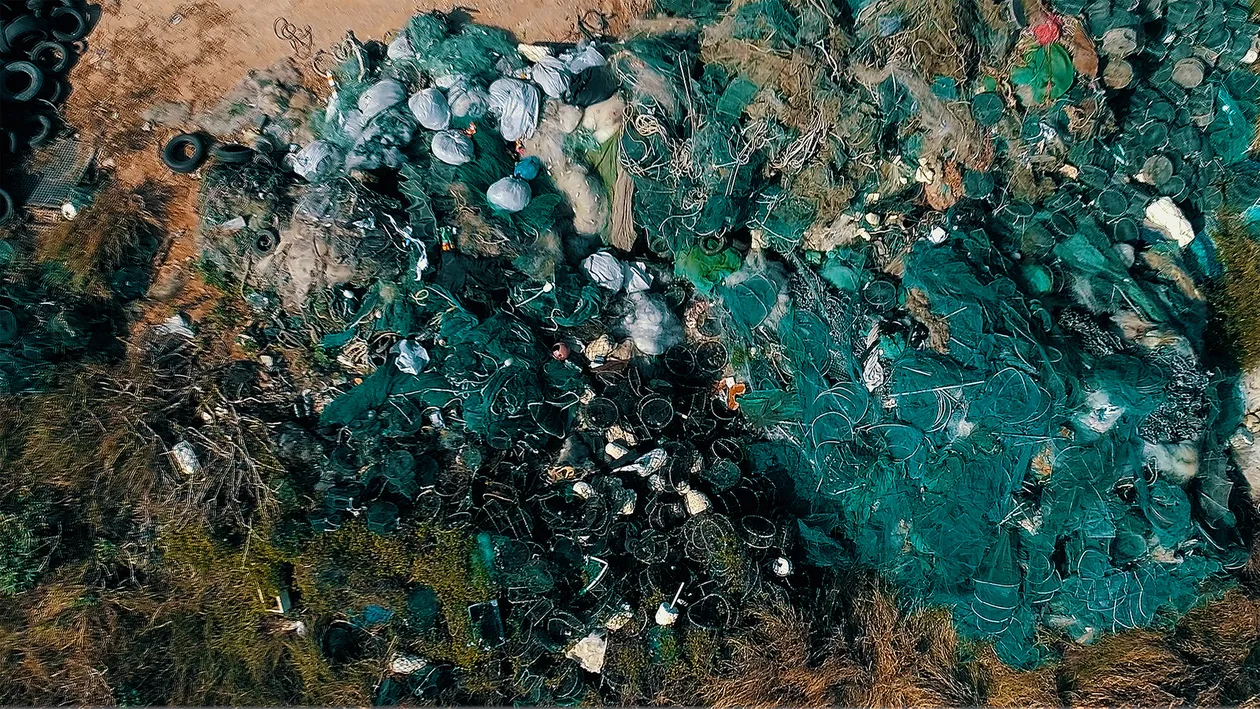 (Source: Formosa Chemicals And Fibre Corporation)
(Source: Formosa Chemicals And Fibre Corporation)
The United Nations Food and Agriculture Organization has estimated that 640,000 metric tons of abandoned, lost or discarded fishing gear, known as “ghost gear”, enters the ocean every year, and accounts for approximately 10 percent of all marine litter.
Much of the so-called ghost gear consists of fishing nets that were left behind, whether swept away in inclement weather, caught in reefs at the bottom of the ocean floor, or deliberately abandoned. They are made of synthetic fibers ranging from nylon and polyethylene to polyester and polypropylene and are therefore durable and take forever to decompose.
Even after fishing boats have left, the ghost nets continue to catch sea creatures on the ocean floor, and the algae or rotten fish that get trapped in them only attract more marine life into the nets’ lethal claws.
In fact, the damage caused by these submarine “ghosts” goes beyond trapping fish or drowning sea turtles. They also damage coral by blocking the sunlight needed for photosynthesis to keep coral alive, indirectly destroying the habitats and food sources of marine life.
Even ships are not spared, as the nets get entangled in or block inlet valves and propellers, jeopardizing maritime safety. In other words, they pose serious threats to the marine ecosystem and the ocean economy.
Dealing with these discarded nets has become a priority for governments around the world, including in Taiwan. In recent years, government agencies responsible for Taiwan’s fishing industry have adopted a carrot-and-stick approach to manage the problem at its source and promote recycling.
Fishermen, vendors team up to tackle net waste
Taiwan’s Fisheries Agency started with smaller fishing boats that operate closer to shore by requiring that they mark their gill nets with their fishing boat registration numbers and report when a net is lost. It has also installed collection drops for discarded nets in major harbors around Taiwan.
At the same time, the Ocean Conservation Administration has offered incentives the past two years for recycling discarded fishing nets, offering NT$15 per kilogram of fishing net turned in. The program has led to the recycling of 150,000 kilograms of old nets to date.
In Keelung, the largest distribution center for fish catches, Zhengbin Fishing Harbor has brought in empty containers to temporarily store waste nets, and the larger Badouzi just down the coast is preparing a temporary waste net storage area of its own.
Whether setting up storage areas and managing them or promoting recycling, it is all being done voluntarily.
“Society is progressing, and fishermen are changing with it,” said Chen Wen-chin (陳文欽), the head of the Keelung Fishermen’s Association, who indicated that abandoning a fishing net at sea has become a rarity for Keelung fishermen. Over the past two years, they have even taken to scooping up floating garbage and clearing discarded nets in waters off Taiwan’s northeastern coast, he said.
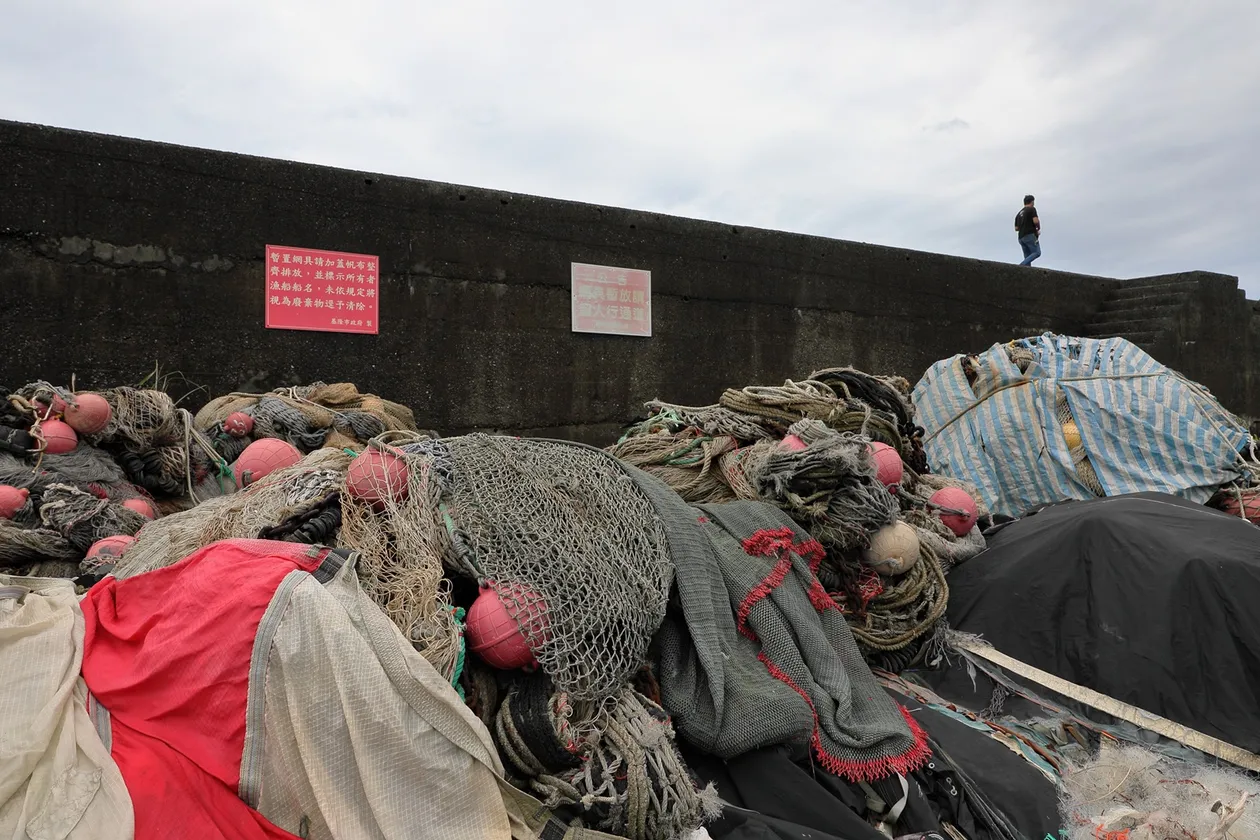 (Source: Chien-Tong Wang)
(Source: Chien-Tong Wang)
Making nylon better than new
Of the many different materials used to make fish nets, nylon is the one with the most complete recycling chain.
Once melted and recycled, it can be injection molded to make products as diverse as sunglass frames, casings for consumer electronics gadgets, and suitcases. Downstream users once bought recycled plastics and mixed them with virgin plastics to lower their costs, but times have changed.
“The post-consumer recycled materials derived from waste fishing nets now sell for 10 percent more than new materials,” said Anson Huang, (黃群益), general manager of Rebornplas Composites Co., one of Taiwan’s leading nylon net recyclers.
The reason, he said, is that international brands with environmental commitments want their products to be made of recycled materials, but require that those materials have the same properties as if they were new
Made mainly of nylon, the huge nets used by distant-water fishing boats that surround and trap fish, called seines, and the gill nets used by fishing boats that operate closer to shore are currently hot commodities in the recycling market. Over the past two years, they have had an especially high-value outlet: functional clothing.
One morning in April at a pier in Kaohsiung Harbor, a group of 20 people showed up before 7 a.m. with five pallet jacks. They are from King Chou Marine Technology Co., Taiwan’s biggest commercial fishing net producer, and are there to welcome a distant-water bonito fishing boat that has not been back to Taiwan for three years. One of their main missions is to collect old fishing nets.
 (Source: Chien-Tong Wang)
(Source: Chien-Tong Wang)
The ship’s seine nets weigh roughly 80 metric tons and take a whole day to unload. After being disassembled, they are transported to the Pingnan Industrial Park in Pingtung County where a horde of experienced workers quickly dismantle and sort the nets’ floats, ropes, and metal chains.
The remaining nylon mesh is then sent to Formosa Chemicals & Fibre Corp. (FCFC) and combined with gill nets collected from various ports around Taiwan to be chemically recycled and turned into nylon fibers. Those fibers are made into fabric by FCFC subsidiary Formosa Taffeta Co., which ends up in functional apparel worth thousands of Taiwan dollars sold by outdoor sporting goods chain Patagonia.
The secret of success: chemical recycling
Through the initiative, launched in 2018, waste nets received by FCFC have been turned into 400,000 pieces of clothing. It is the only provider of nylon used in Patagonia’s “NetPlus” line of apparel and accessories.
What sold Patagonia on the proposition was FCFC’s processing technology enabling the recycled nylon to match the quality of virgin nylon.
A major manufacturer of nylon, FCFC had developed a chemical recycling process to handle waste materials when it first began making nylon fiber in the 1970s.
That process was optimized for marine waste in recent years, enabling the nylon in the old nets to be restored to its old glory, then turned into pellets and eventually drawn into the finest of fibers. Not needing any new petroleum inputs, producing the recycled nylon generates 49 percent less carbon emissions compared to new nylon.
The waste nylon has also created high added value because of the technology of upstream material producers and the support of big brands.
“The chemical method is the most thorough when it comes to recycling,” said FCFC Chairman Hung Fu-yuan (洪福源). According to Hung, the physical recycling process through thermolysis (heating) yields recycled nylon of lesser quality and therefore of only limited use.
Only three companies have mastered the chemical process that turns waste nylon into functional fibers – FCFC, Hyosung Corporation of South Korea, and Italian synthetic fibers company Aquafil.
That competency had made it possible for FCFC to transition from a linear economic model of selling virgin nylon to fishing net makers to a closed loop circular model in which it processes and recycles its own fibers.
The one vulnerability in the loop is actually obtaining used nylon to process, but over the past three years FCFC has been building a net recycling ecosystem with fishermen’s associations, the government, and fishing net producers to solidify recycling pipelines.
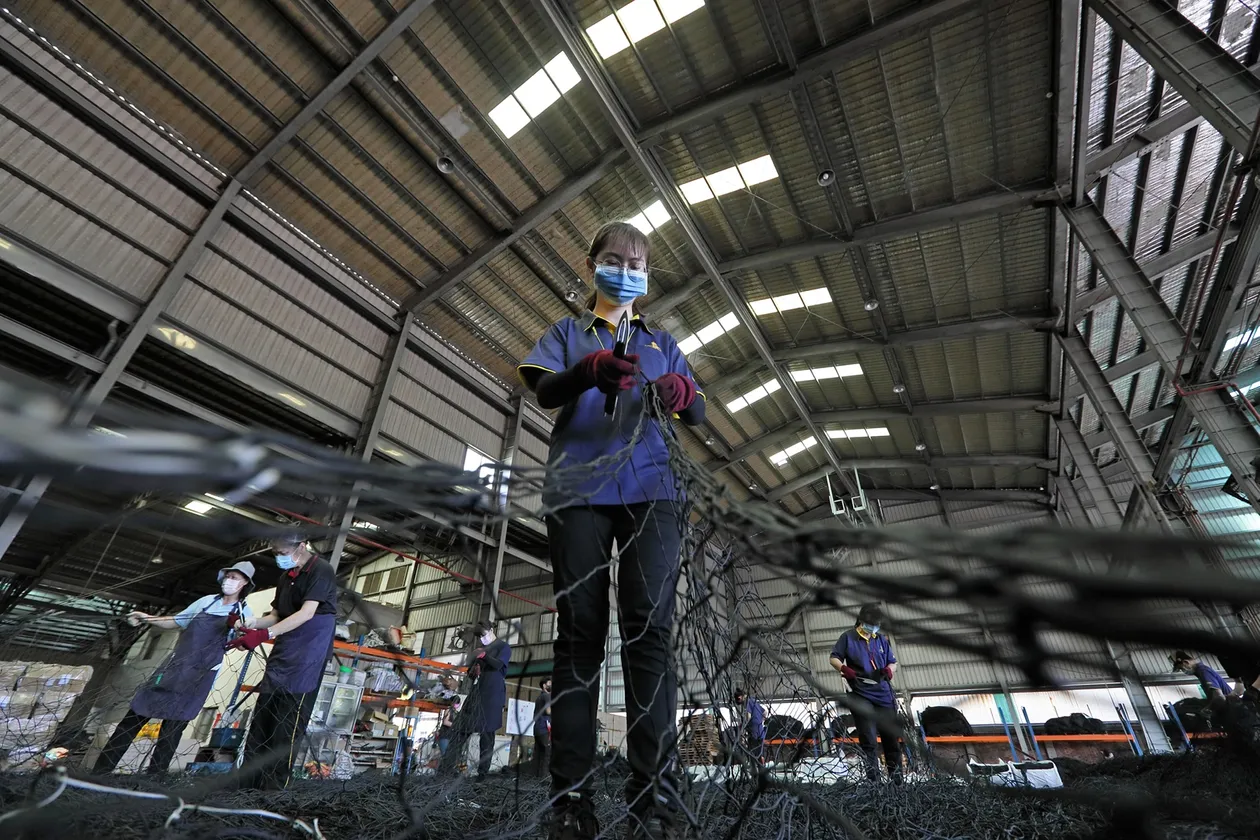 (Source: Chien-Tong Wang)
(Source: Chien-Tong Wang)
By the end of 2022, FCFC’s plant in Chiayi County will triple its previous fishing net recycling capacity to 750 metric tons a month, which would make it the world’s biggest fishing net chemical recycling facility.
Yet while recycled nylon can be turned into high-end fabrics and apparel, it is not a high margin business because of the high R&D and processing costs involved in recycling the discarded nets. FCFC views the initiative as a responsibility of manufacturers in the supply chain and intends to explore new chemical recycling processes for other materials.
From Keelung to Pingtung, the fight against discarded and abandoned fishing nets has begun in earnest, driven by corporate citizenship and sustainability values as well as commercial opportunity. Its outcome could determine the fate of many sea creatures already struggling to survive the ravages of plastic waste in ocean waters
Have you read?
- How can Cheng Kung University reach carbon neutrality in 20 years?
- Turning used cardboard lunch boxes into fuel? Paper mills hold the secret weapon
- Net zero emissions: a core business priority
Translated by
Luke Sabatier
Edited by TC Lin
Uploaded by Ian Huang






